According to tradition, the “Fountain of the Amazed” has this name, due to the astonishment & admiration that it caused in contemplation, also that those who drink of its water will be connected to Azeitao forever.
It is an Imposing construction, ordered to be erected in the XVIII century by Judge Machado de Faria. In Baroque style, influenced by the works of Carlos Mardel of Lisbon, it is composed of a Polilobada basin in pink marble, leaning against the central column, of which runs the water by two water spouts, one for drinking and one not.
Mercado Municipal/ Municipal Market of Azeitão
The market is a meeting point for the village, it is used not only by the elderly but also, & more often, by the younger generation, it has a very modern atmosphere. In addition to the sale of regional products, such as cheese, it has a butcher's fishmongers, florists & fruit & vegetables.
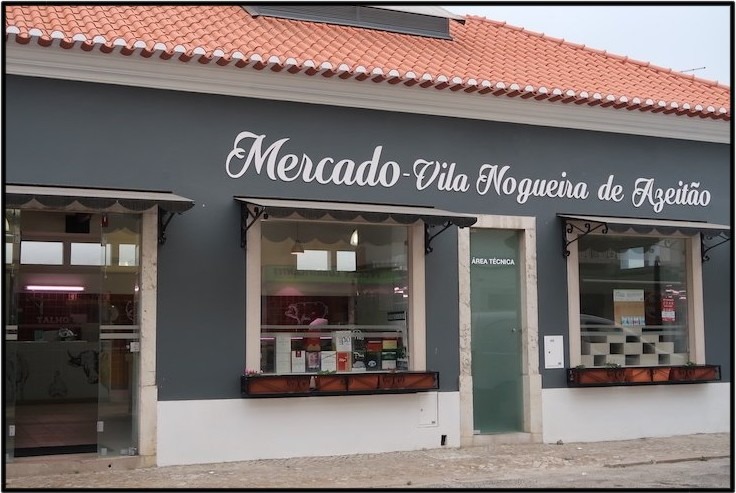
Oliveiras Milenares/ 2000 Year Old Olive Trees
These three-thousand-year-old olive trees of great beauty, they are catalogued as trees of Public Interest, having 2000 years of life.
They were already here before Portugal. It is a set of three ancient olive trees, Olea Europaea L. Var. Europaea, planted when the Romans were still here.
Think of the human generations that have passed by them, sat in their shade, or collected olives from them.
They have a commanding presence, though go unnoticed. They are along the N10 leaving Azeitao. The place is quite simple but the trees are worth the visit.
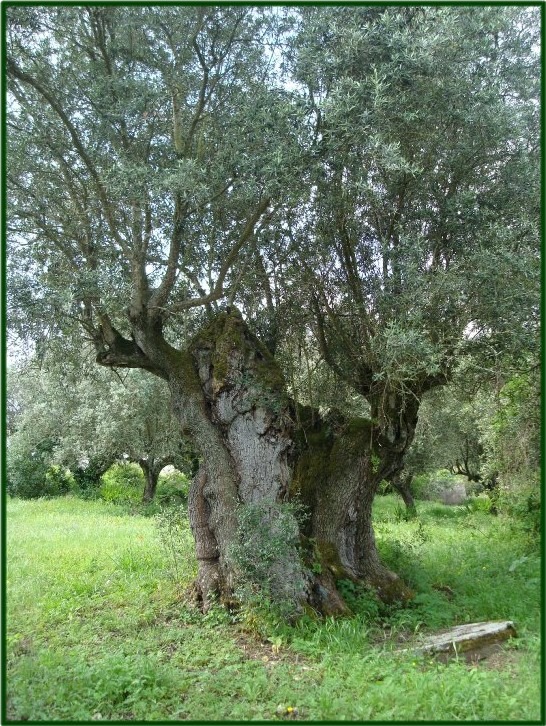
Palace of the Dukes of Aveiro
Despite its state of degradation, it is the most monumental construction & the one that best symbolises the aristocratic past of the lands of Azeitão.
It was built in the middle of the sixteenth century by order of D. João de Lencastre the first Duke of Aveiro, on land that was given to him by the friars of the
Convent of S. Domingos.
In this palace, the Duke of Palmela and all his family were arrested for allegedly participating in a conspiracy against King D. Jose. On the entrance, there is still visible the coat of ducal arms, cut by order of the Marquess of Pombal.
After the arrest of the Duke, everything was stolen or simply disappeared. Later the building was given by the Marquis of Pombal to an industrialist for the installation of the first factory in Portugal producing cheap cotton from 1755 to 1846.
It is a stern & majestic, Mannerist style.
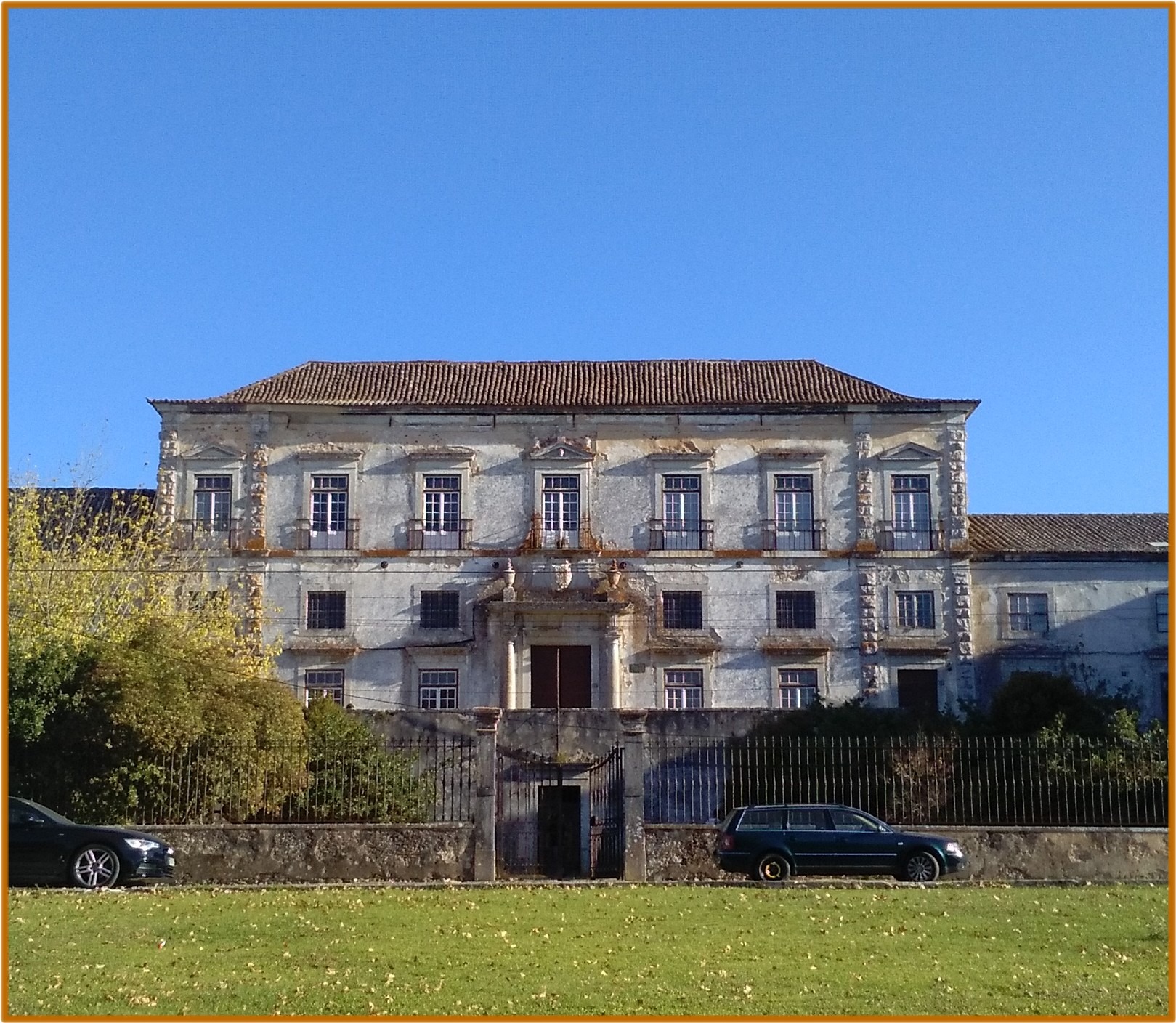
Convent of S. Domingos
Built in 1434, it collapsed on the occasion of the earthquake of 1755. Only the noble entrance remains with stonework XV-XVI century
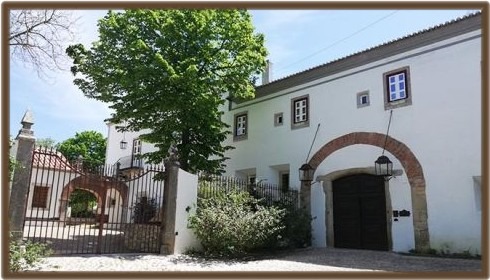
Igreja de São Lourenço/The Church of São Lourenço
The present construction dates back to the sixteenth century but, on the spot, a temple had existed since the 14th century, of which nothing survived.
It is a church of simple construction & rectangle façades.
A huge contrast to its rich interior, beautiful tiles and a dome from the 17th century, those of the main chapel, attributed to the workmanship of Mestre António Oliveira Bernardes 18th century & the baptistery from the Pombaline period.
Also worthy of mention are the baptismal font & pulpit, & the high relief panel of enamelled earthenware, representing the Virgin and Child, 16th century, which came from the convent in Arrabida.
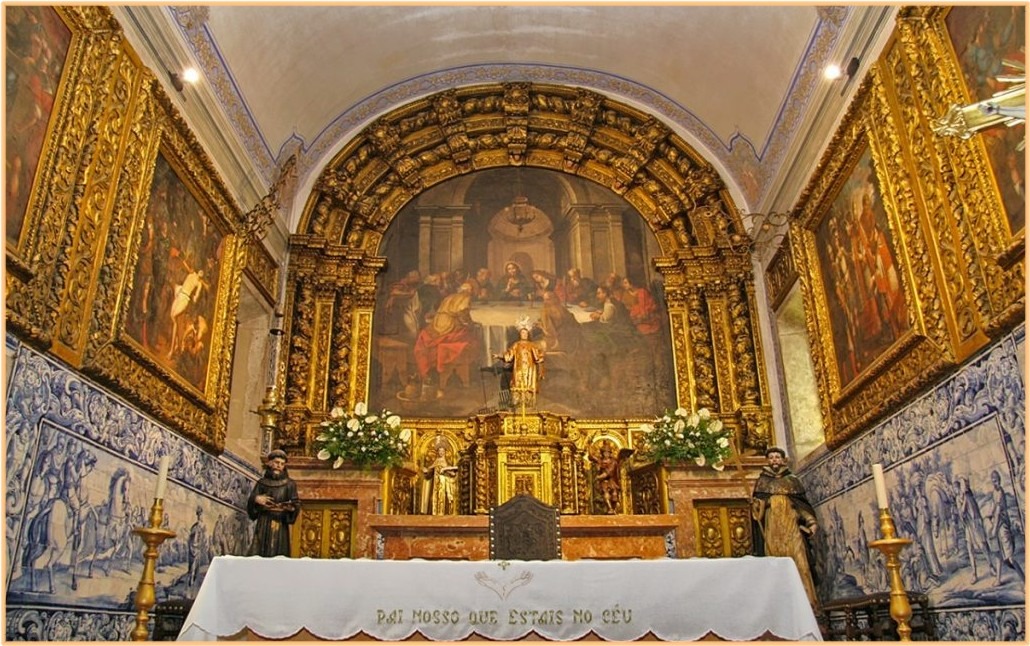
Lavadouros/Municipal Laundries
Municipal laundries were recently renovated, originally used by washerwomen to do their laundry in the 16th century. Still there are the tanks of fresh & clean water, but, of course, no one washes their clothes anymore. It is now a lovely cafe.
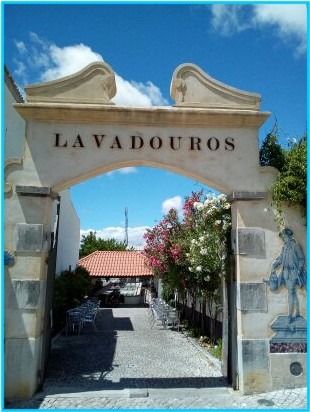
Quinta das Torres
Quinta das Torres is a small palace dated around 1570 and is one of the most important & beautiful Renaissance architectural complexes in Portugal. Inside almost all the rooms have wooden ceilings, roman doors & wall tiles. Worthy of special mention is a remarkable set of azulejos in Majolica with scenes of the Aneid & probably came from Urbino, Italy.
Next to the main building is a small lake & in the centre, there stands a temple. The whole area is framed by a beautiful grove that creates an idyllic setting. Today it is open as a hotel, restaurant and tea house.
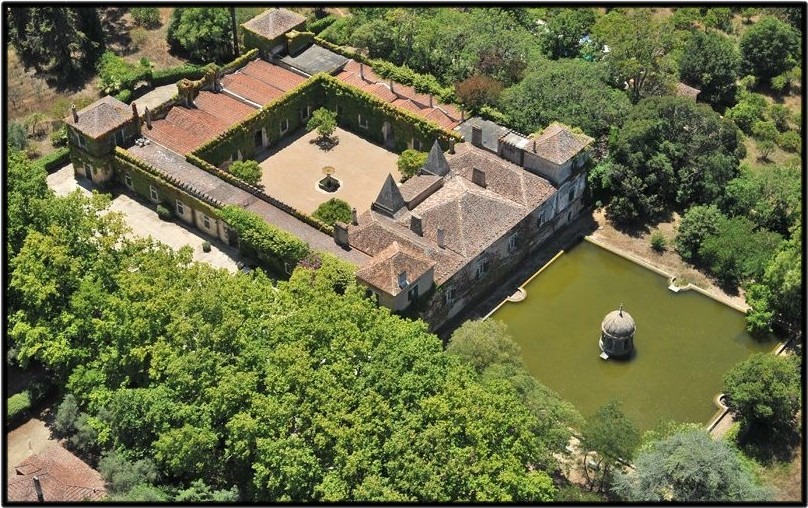
Jose Maria da Fonseca Wine Cellars
Jose Maria da Fonseca is one of Portugal's largest & most prestigious wine companies, It was founded in 1834 & run with undiminished passion since that date by the same family.
Built-in the nineteenth century, the house was restored in 1923 by the Swiss architect, Ernesto Korrodi, & was the Soares Franco family residence until 1974. With its particularly beautiful façade & gardens, it has always been associated with the image of José Maria da Fonseca.
The visit to the Museum House begins with a brief explanation of the company’s history, followed by a tour of the ancient wine cellars: Adega da Mata & Adega dos Teares Novos, where wines such as Periquita mature, & Adega dos Teares Velhos, where the oldest Setúbal Muscatels known as Muscats or Moscateis rest, some of which are true relics over 100 years old. At the end of the tour, you can sample some of the wines produced there.
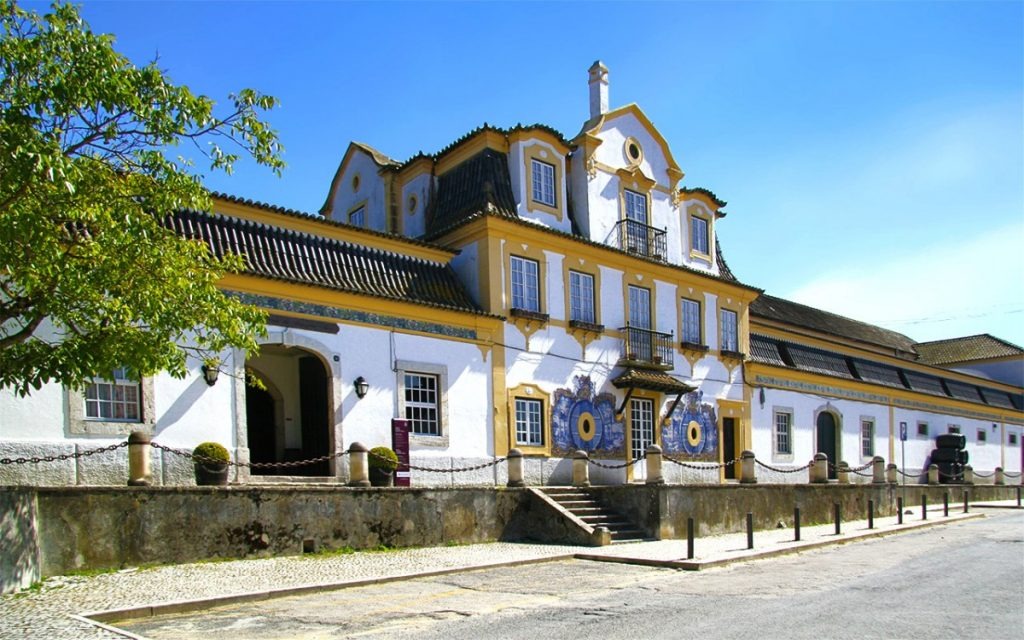
Quinta da Bacalhôa Wine Cellars
Founded in 1922 under the trade name of João Pires & Filhos, Lda., The company's business was for the purchasing of grapes from winemakers in the region of Palmela, exclusively for the production & sale of wine in bulk. In the late seventies, António d 'Avillez became the largest shareholder & drove the company's destination dynamically.
In 1995, through a capital increase, the Berardo Family, acquired a significant percentage of the company, becoming the majority shareholder in 1998. So the modernization of the wineries of Azeitão & Arraiolos was completed. A vast plan of new vineyard plantations began. He also acquired Quinta da Bacalhoa & joined Lafite Rothschild in the Quinta do Carmo wine company.
Today, the company has a production capacity of about 12 million litres, a capacity of wine stage in 6000 barrels of oak & an area of vineyards spread over the main regions of a total of 510 hectares. Another 130 hectares were planted by 2002.
Guided tours incorporate stunning collections of art. An unexpected gigantic blue dog standing guard over 2,000-year-old olive trees, transplanted from the Alentejo region when the Alqueva reservoir was formed. The Out of Africa exhibition is dedicated to Nelson Mandela.
A stunning collection of Azulejo’s tile panels displaying 500 years of
Portuguese ceramics around a wine cellar, Exquisite marquetry & glorious Art Nouveau glassware collections.
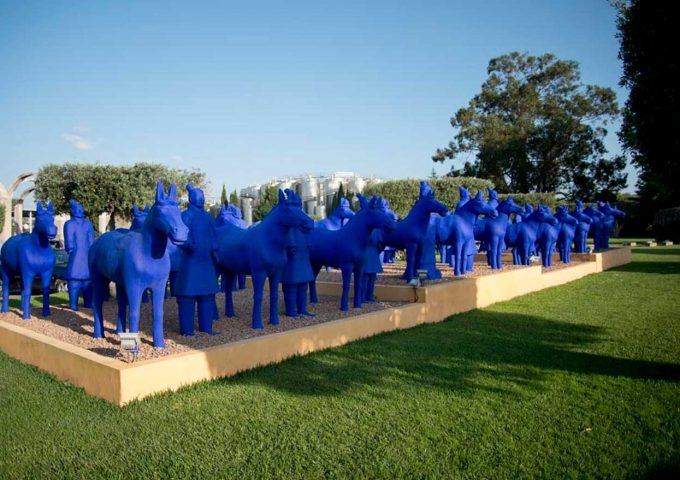
Palácio da Bacalhôa/Bacalhoa Palace
Much has been written about Palácio and Quinta da Bacalhôa, but the conclusion is always the same it's a Masterpiece.
The Quinta da Bacalhôa estate, formerly belonging to the Portuguese Royal Family & they used it as a summer estate, dating back to the first half of the XV Century. It is considered to be the most beautiful Portuguese estate from this era still in existence today.
The Quinta has had many names, throughout its history, "Ville Fraiche", "Quinta da Condestablessa" or "Quinta do Paraíso". The name of Bacalhoa only arises from the seventeenth century, when the Quinta came into the possession of D. Maria de Mendonça, married to D. Jerónimo Manuel, whose name was O Bacalhau.
It is the most famous farmhouse in the region due to its rich tile heritage from the 15th & 16th centuries. D. João, Master of Santiago’s daughter, D. Brites, inherited the property having erected the Palace & the fences.
The present construction dates from 1528, being work of Braz de Albuquerque.
The new building has retained some elements of the former buildings, the Ogive vaults, the towers with domes of buds incorporated into the Palace & scattered throughout the farmland, The garden, which develops around a fountain, presents us with a set of hedges of geometric design, following the model of the Renaissance garden, of which is a precursor in Portugal, considered one of the most remarkable monuments of architectural landscaping here.
There are some incredible statues & paintings on display, as well as information about the history of the palace itself. The best features of the palace, however, are found outdoors a labyrinthine garden & a small pleasure pool. In the pool’s patio, admire the ancient tiles whose designs are unique in all of Portugal.
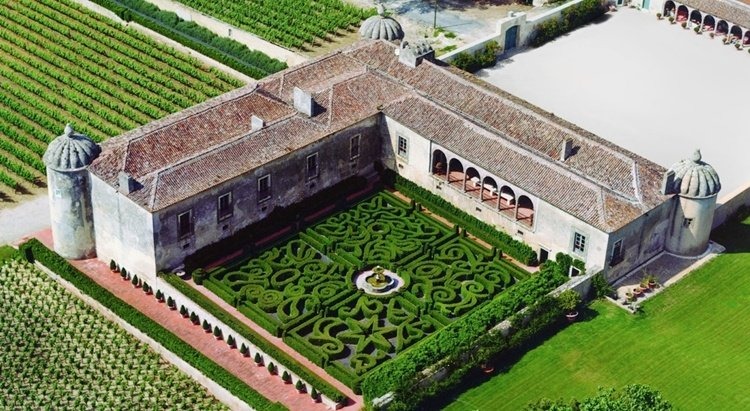
AZULEJOS DE AZEITÃO
When walking in Portugal it is impossible to be indifferent to the churches, palaces & other buildings covered in tiles. Although they have Muslim roots, the tiles have become a symbol of Portuguese culture & learning more about them is essential to know the local culture.
Next to Quinta do Palácio Bacalhoa, there is a typical & traditional tile factory that keeps alive in its essence the process of manufacturing & painting completely manual, as they were in the XV-XIX centuries.
Azulejos de Azeitão is an authentic jewel for lovers & collectors of tiles. Between the factory & shop shelves, you will find European, Islamic & Chinese designs of the most different types, whether painted or embossed, in the Hispano-Arabic style of the 15th and 16th century.
This is not a common factory, here you can visit for free & learn in detail this symbol of Portuguese culture, you will see that there is a lot about tiles to discover. Artists are available to explain everything about the traditional production of the tiles through 3 techniques Majolica, Aresta or Cuenca & Corda Seca.
Also Lectures on the various phases of the manufacturing process, the glazing & finishing in the painting.
It is also possible to experience the painting of your own tile.
Whatever direction your eyes go, you will find beautiful collections of tiles and historical records at your disposal. After spending a few moments inserted in the local culture it will be impossible to leave Azulejos de Azeitão empty-handed!
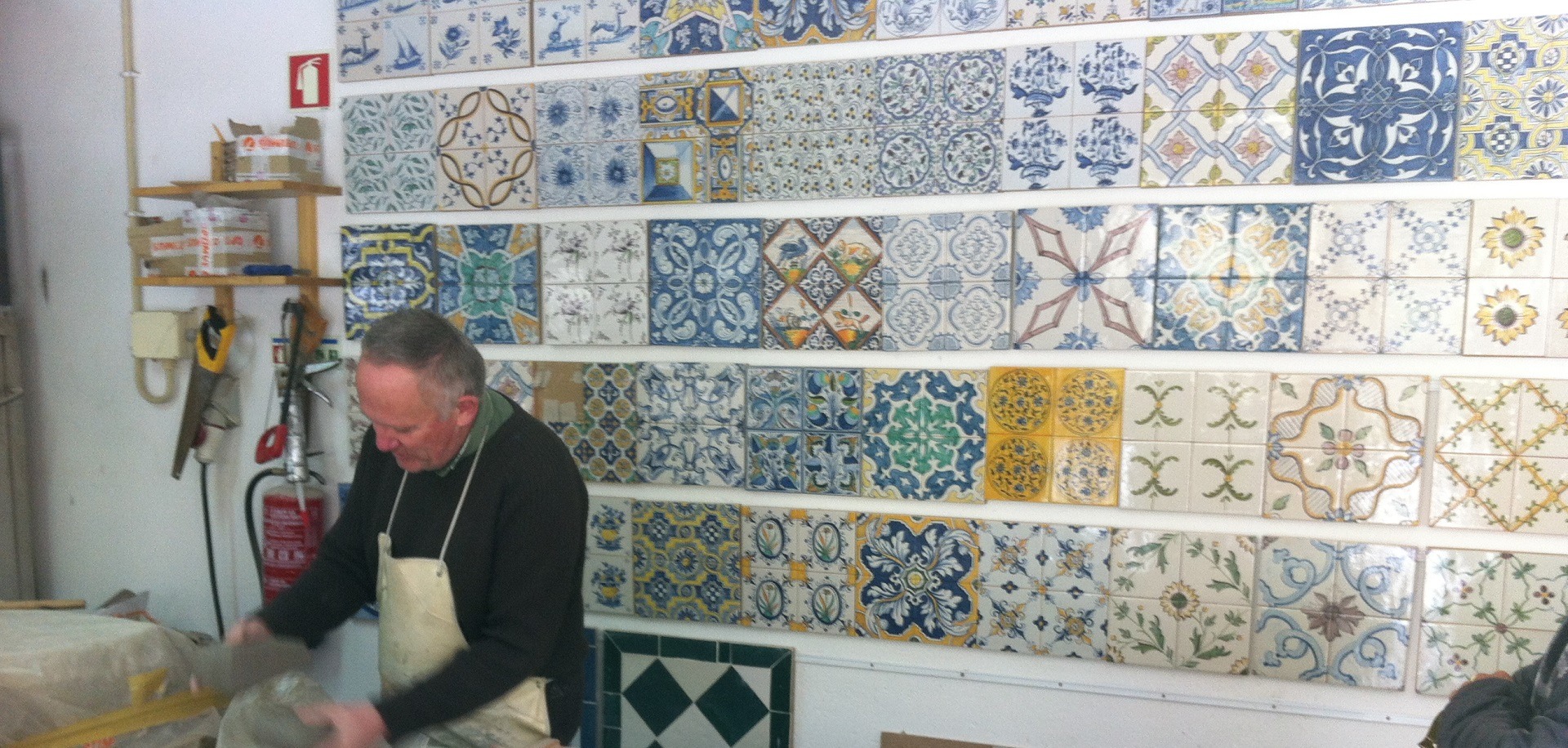
S. Simão Arte/ Handmade Portuguese Tiles
António Soares Franco, a distinguished antique collector was renown in his passion for decorative tiles.
His nephew, António Avillez, accompanied him many a time on his trips to antique & scrap metal fairs hunting for relics. He acquired the same passion for tiles, he then dedicated most of his time hunting for samples, which would constitute a valuable collection.
A large part of this collection can be seen today when visiting the cellars of Bacalhoa Wines.
Finally he made the decision to produce tiles himself in Vila Fresca de Azeitão which functions under the name of São Simão Arte. In 1983, he invited two of his friends, Jaime Peralta & Álvaro Diniz, to enter into this venture and the three became equal partners. In 2006, two of the partners conceded their positions to António Avillez.
From the beginning there existed the preoccupation of maintaining fidelity to the ancestral factory where the acquisition of clay, drying, baking & painting was all manual.
Only the electric kilns differ to the traditional ones. Until this date, more than a million pieces have been sold, not only on the national market but also abroad. This year 16.000 tiles were commercialised into beautiful panels.
In 1983, life at S. Simão Arte was running well, gaining acceptance from appreciators of decorative tiles. At that time, the manager, António Avillez, a collector himself, decided to go ahead with the production of faiences.
Hence a new sector was born, dedicated to faience in traditional taste, which became known as Faianças de Vila Fresca.
From the beginning, the company was dedicated only to the reproduction of plates from Estremoz style. This was possible due to access to originals from António Avillez’s collection some of which originated from the Real Fabrica do Rato & is signed by the Italian, Tomaz Bruneto. To avoid their products being as originals, the company chose the symbol A to be engraved on each item & later on from 2007 it was changed to B.
Faianças de V.F. started to diversify by also producing terrines, jars, pots, etc & extended its line to include other decorative plates which were reproductions from the Ratinhos, Aranhões & Meninas Gordas. Always using colours & tones of classic glazing that adds more character, quality & distinction to all of their products.
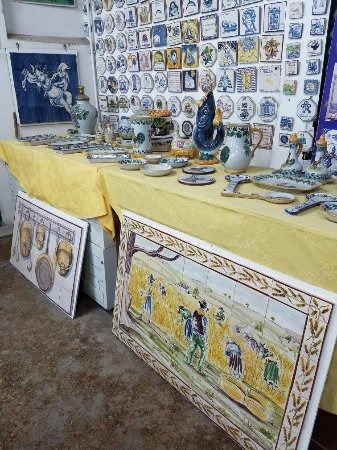
Festas/ Festivities Calendar
Qeima de Judas/ Burning of Judas - Saturday of Hallelujah April in Oleiros
Festa do Morango/ Strawberry Festival - May in Brejos de Azeitão
Tradições, Sabores e Aromas de Azeitão, Flavors & Aromas of Azeitão - June in Vila Nogueira de Azeitão
Festivities of Arrábida and Azeitão / Círio da Arrábida - July in Vila Nogueira de Azeitão
Festa de S. Pedro/ Feast of St. Peter - July at S. Pedro de Alcube
Festas de S. Simão/ Festivities of S. Simão - August in Vendas de Azeitão)
Festas de S. Lourenço/ Festivities of S. Lourenço - August in Vila Nogueira de Azeitão
Festa de Nossa Senhora del Carmen/ Feast of Our Lady of Carmen - August at Capela de Nossa Senhora de El Carmen
Festa da Sr.a da Conceição/ Feast of Senhora da Conceição - August 15 in Aldeia da Piedade
Festa de Nossa Senhora da Saúde/ Feast of Our Lady of Health - September in Vila Fresca de Azeitão
Procissão do Senhor dos Passos Procession of Senhor dos Passos - November in Vila Nogueira de Azeitão
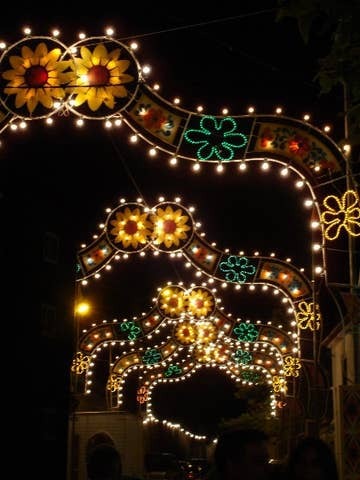
Specialities of Azeitão
Queijo de Azeitão
One of the traditional activities of the Natural Park of Arrábida, the Cheese of Azeitão is a buttery cheese, made with sheep's milk, which is characterized by its peculiar flavour & aroma, qualities that are given to it by the Arrábida grasses & the thistle that is used in its coagulation.
Its origins date back to the 19th century when a cheesemaker from the Serra da Estrela Region settled down in Azeitão & taught to the shepherds of the region the secrets of the manufacture that, transmitted from generation to generation, gave rise to one of the most appreciated Portuguese cheeses.
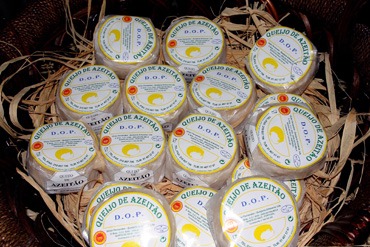
Torta de Azeitão
The origin of torta de Azeitão dates back to the end of the 19th century & began to be a familiar sweet, but today it has become an icon of regional sweets.
The Story begins with the hands of Manuel Rodrigues, better known as O Cego - The Blind One, he & his family are responsible for creating some of the most appreciated sweet recipes in the country among them, is the recipe for Torta de Azeitão .
Thanks to the skilful hands of his wife, D. Maria Albina, O Cego became the first & most famous manufacturer of the delicious sweets. Their daughter, who was also gifted in the kitchen, later invented a series of other sweets that quickly became notable in Azeitão. The O Cego pastry shop in Azeitão sells the original Tortas de Azeitão since 1901.
Esses of Azeitão are another regional sweet of the locality that gave them the name. They are very simple biscuit with an irresistible cinnamon aroma & are great to eat at the snack or for accompanying a tea or coffee. But best of all have them warm & dip them into a glass of Moscatel.





